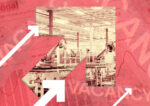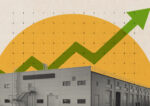Industrial vacancy rates in Dallas-Fort Worth continue to climb higher as the market contends with a wave of deliveries.
The vacancy rate climbed to 11 percent in the third quarter, marking an increase from the long-term average of 8.3 percent, Bisnow reported, citing Avison Young.
The increase comes amid a tapering of construction activity, with only 19.5 million square feet of industrial space under development, down sharply from the 65 million square feet delivered last year.
The vacancy issue has its roots in the surge of development from 2022 onward, which created an oversupply as leasing lagged behind deliveries. Recent projects are particularly affected, with a 32 percent vacancy rate among developments completed in the past two years.
Leasing activity has been steady, however, as net absorption in the first three quarters reached 17.9 million square feet, surpassing the region’s long-term average of 13 million square feet annually.
“We expect vacancy to move notably lower through 2025 as our slower development pipeline lets this new product lease up,” said Greg Langston, managing director at Avison Young.
While vacancy remains elevated, the region is still a prime location for logistics and distribution due to its affordability and connectivity.
Dallas-Fort Worth’s industrial sector has long been one of the most affordable in the nation, with average rents plateauing at $7.85 per square foot. The region’s stable rental rates underscore the competitive positioning of the market compared to other logistics hubs, where rents can soar above $12 to $16 per square foot.
As developers adjust to market conditions, the focus will shift toward attracting tenants to the existing space and filling vacancies in recent developments. The region’s multimodal infrastructure and affordability remain strong selling points, but the question of how quickly supply can meet demand will dictate the market’s trajectory into next year.
Savills pegged the metro’s industrial vacancy rate at 11.2 percent in the second quarter, which was up from 7.6 percent a year earlier. The opposite trend is taking shape in Chicago, where a lack of deliveries is helping revive the industrial real estate market.
— Andrew Terrell
Read more



